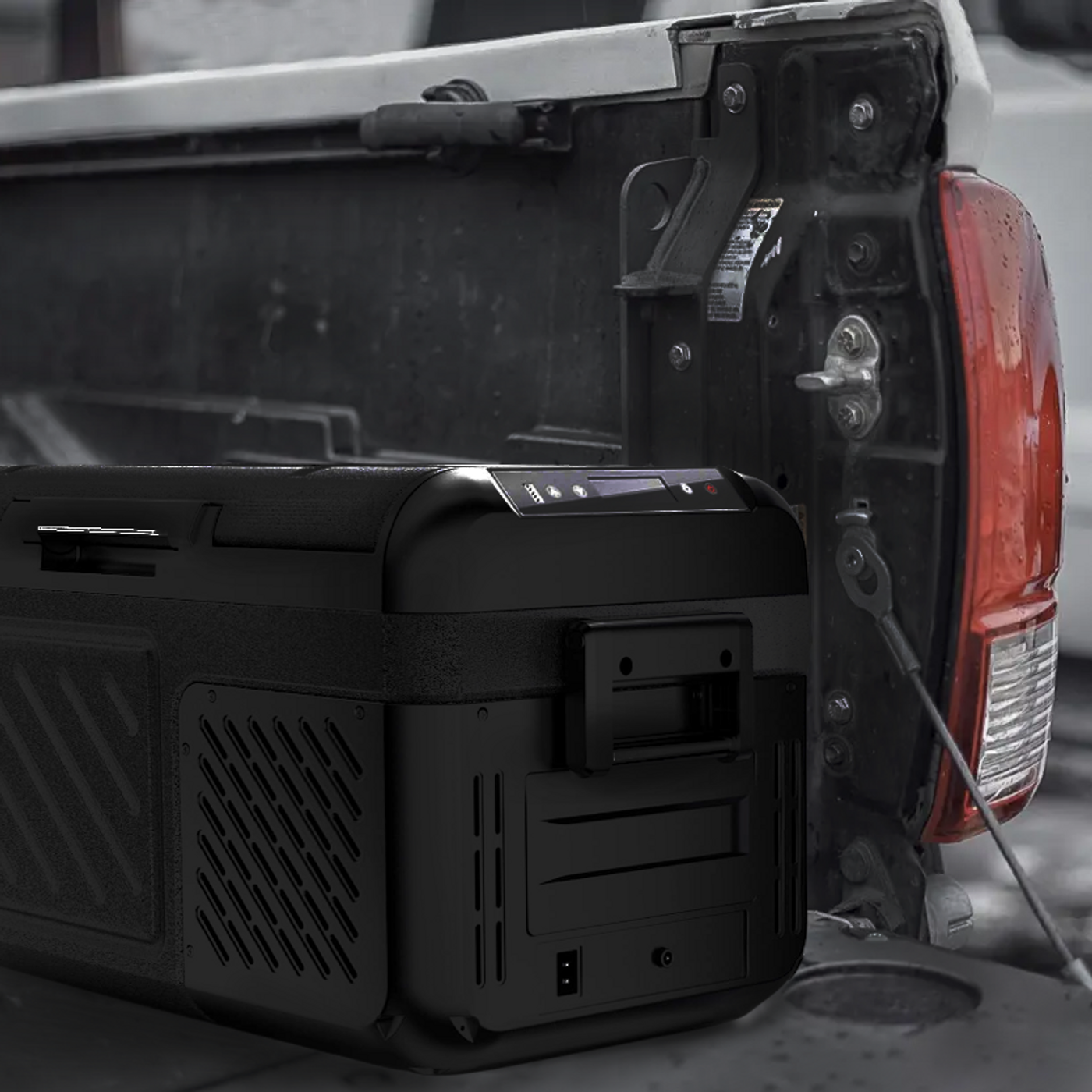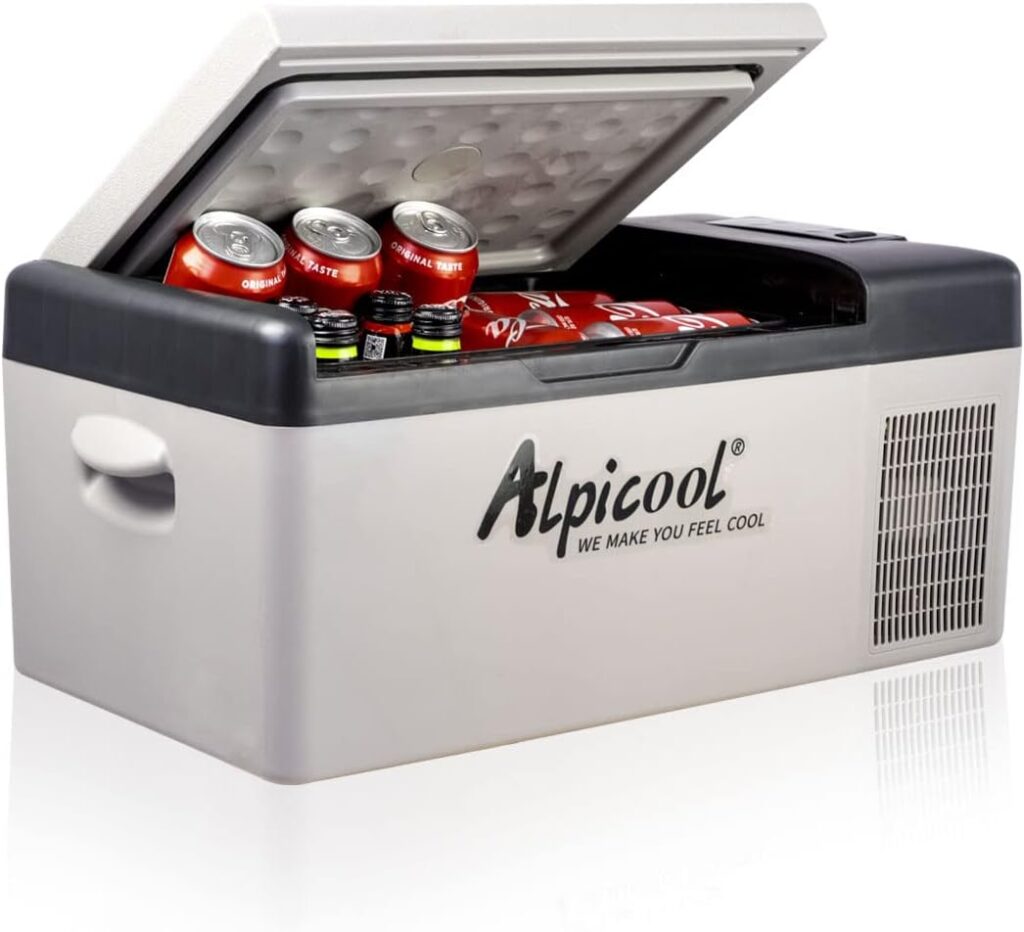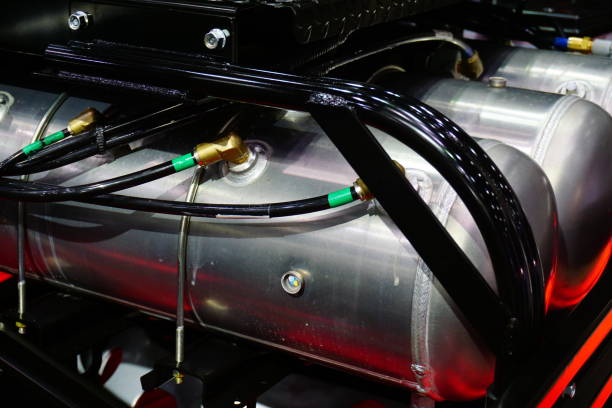There’s nothing worse than reaching for a drink after eight hours of highway hypnosis only to find it’s warmer than your engine block. Trust me, lukewarm soda and melted chocolate bars are the unofficial sponsors of trucker disappointment. After fifteen years of hauling freight and my fair share of tepid beverages, I’ve learned that a good refrigerator isn’t just a luxury—it’s practically essential equipment for any driver with taste buds.
When I installed my first truck fridge back in 2019, I made every mistake in the book. Improper mounting? Check. Inadequate power supply? You bet your diesel. My first sudden stop sent that fridge surfing across the cab faster than a lot lizard spotting a state trooper. That’s why I’ve put together this guide—to save you from the comedy of errors that was my introduction to mobile refrigeration.
Why a Truck Fridge Is Worth Every Penny
Before diving into installation, let’s talk about why you might want a fridge in your truck:
- Fresh food on the road saves money. I calculated I was spending roughly the GDP of a small island nation eating at truck stops every month. My wallet was getting thinner while I, ironically, was not.
- Healthier eating options. Access to fresh fruits, vegetables, and protein helps avoid the truck stop diet—that magical nutrition plan that somehow converts beef jerky and energy drinks into love handles.
- Comfort during long hauls. There’s something genuinely soul-restoring about having cold drinks and fresh food when you’re in that special circle of highway hell where even the radio stations have given up.
My buddy Mike tells me his fridge paid for itself in under two months just from the savings on roadside restaurants. “Best investment I ever made in my cab,” he says—second only to those leopard-print seat covers his wife absolutely despises.
Choosing the Right Fridge for Your Truck
Not all truck fridges are created equal. Here’s what I’ve found matters most:
- Size considerations: Measure your available space twice before purchasing. The area behind the passenger seat in most trucks is about 18″ wide and 24″ deep, but your measurements will vary. Remember, this is the one time in trucking where size actually does matter.
- Power consumption: Lower amp draw means less strain on your electrical system during rest periods. Your truck battery will thank you by not dying in the middle of nowhere, Nebraska.
- Cooling capacity: Look for fridges that can maintain temperatures below 40°F even in summer heat. Nothing says “regrettable life choices” quite like food poisoning 200 miles from the nearest town.
After trying nearly every fridge on the market (my garage looks like a refrigerator graveyard), here are my top recommendations that won’t leave your wallet as empty as your stomach:
Dometic CFX3 45 – The Premium Option
The king of the road when it comes to truck fridges. Yes, it’s pricier than the alternatives (around $999 on Amazon), but this thing is built like a fortress with reinforced corners that can handle every pothole the DOT hasn’t fixed in the last decade. What really sets it apart is the insanely efficient cooling—it reaches -7°F while somehow sipping power like it’s on a diet. The smartphone app lets you control everything from your bunk, and the high-resolution display makes temperature checks a breeze. Think of it as the difference between truck-stop coffee and a proper espresso—once you’ve experienced quality, it’s hard to go back.
Dometic CFX3 45 Portable Fridge Freezer 46L
Setpower PT35 – The Best Mid-Range Pick
This dual-zone beauty (around $429) gives you the flexibility to freeze your steaks in one compartment while keeping your drinks perfectly chilled in the other. It cools down faster than gossip at a weigh station—fridge temps in 15 minutes, proper freezing in under an hour. In Eco mode, it draws just 35W of power, and it operates at a whisper-quiet 42dB—about as loud as a sleeping co-driver. It also functions at up to a 40-degree tilt, which is handy for those of us who occasionally park on the shoulder for a quick nap.
SetPower PT35 – DIRT CHEAP Dual Zone 12v Compressor Fridge Freezer
Alpicool C20 – The Budget-Friendly Champion
If you’re just starting out or watching your pennies, this compact powerhouse (around $219) is your best bet. Don’t let the lower price fool you—it still cools down to an impressive -4°F with no ice needed. The thick foam insulation keeps things cold even when unplugged during your mandatory break, and the three-level battery protection system ensures you won’t be calling for a jump start in the morning. I’ve seen these little warriors still chugging along after five years of hard use, which is more than I can say for some of the relationships I’ve had on the road.
1-Year Review of My CHEAP Portable Car Fridge (Alpicool C20 Long-Term..)
Essential Tools and Materials
Here’s what you’ll actually need for installation:
- Your chosen truck refrigerator (preferably one that cools rather than just looking pretty)
- Power cable (most fridges come with a 12V adapter that’s about as durable as wet toilet paper)
- Mounting brackets or tie-down straps (the difference between a stationary appliance and a potential projectile)
- Basic toolset: screwdrivers, wrenches, pliers (not the rusty ones you’ve had since 1997)
- Wire ties for cable management (because nothing says “professional” like cables not dangling like spaghetti)
- For hardwiring: 10-gauge wire, inline fuse holder, ring terminals (sounds complicated, but so was learning to back into tight spaces)
- Measuring tape (because “eyeballing it” is how my cousin Earl ended up with a fridge that wouldn’t let his seat recline)
- Level (even a small pocket one helps prevent your soda from always migrating to one side)
Finding the Perfect Spot: Location Matters
After trying three different locations in my Peterbilt, I can tell you placement is crucial. Consider these factors:
- Accessibility: Can you reach it while seated? Nothing’s worse than having to unbuckle completely for a quick drink. My first setup required the flexibility of a yoga instructor just to grab a water bottle.
- Air circulation: Most fridges need at least 3″ of clearance around vents for proper cooling. Turns out fridges, like your dispatcher, get cranky when they can’t breathe.
- Stability: The smoother the ride, the longer your fridge will last. Every pothole is basically an earthquake to your poor refrigerator.
Popular locations include:
- Behind the passenger seat (most common and what normal people choose)
- Under the bunk in sleeper cabs (for those who enjoy the midnight shuffle of half-awake snack retrieval)
- In the storage compartment (if your truck has an accessible one and you enjoy the sauna-like temperatures of exterior compartments)
My fridge sits behind my passenger seat, secured to the floor with L-brackets. This location keeps it within reach but out of the way of normal cab movement. I’ve named her Frigid Bridget, and she’s been more reliable than my last three relationships combined.
Power Options: Keeping It Running
Your two main options are:
Option 1: Cigarette Lighter/12V Socket
- Pros: Simple plug-and-play installation for the electrically challenged
- Cons: May not provide consistent power, especially when engine is off. Also has an annoying habit of popping out during particularly enthusiastic renditions of “Life is a Highway”
Option 2: Direct Wiring to Battery (My Recommendation)
- Pros: More reliable power, better for prolonged engine-off use, makes you feel like a proper electrician
- Cons: Requires more installation effort and at least one YouTube tutorial
If you’re going the direct route (which I recommend), here’s my process:
- Disconnect the negative terminal from your battery (safety first! I still have the singed eyebrows from when I didn’t)
- Run 10-gauge wire from your battery location to your fridge (think of it as giving your truck a new artery)
- Install an inline fuse (15-20 amp) within 12″ of the positive terminal (this is your electrical insurance policy)
- Connect to the positive terminal with a proper ring connector (not that bent paperclip nonsense)
- Find a suitable grounding point for the negative wire (any clean, paint-free metal surface will do)
- Test the connection before finalizing all wire management (that magical moment of truth)
On my first installation, I skipped the fuse and nearly started a small fire when the wire chafed against metal. Don’t make my mistake—fuse protection is absolutely essential unless you enjoy the smell of melting plastic and the thrill of potential vehicular fires.
Securing Your Fridge: No One Wants Flying Appliances
After watching my first fridge take flight during an emergency stop outside of Tulsa (it achieved brief but impressive air time before crash-landing on my cooler), I learned the importance of proper mounting. Options include:
- L-brackets: Screw directly into the floor (if your truck allows and you’re not afraid of commitment)
- Ratchet straps: Less permanent but still effective (the duct tape of mounting solutions)
- Purpose-built mounting kits: Available for popular fridge models (for those who like to read instructions)
Whatever method you choose, make sure it can withstand the equivalent of at least 20G of force—a hard braking scenario can send unsecured items flying with surprising force. My buddy Rick calls this “The Great Airborne Appliance Test” and has the forehead scar to prove it.
Testing and Troubleshooting
Before loading up with food:
- Run your fridge for 24 hours to ensure it maintains temperature (anticipation builds character)
- Check power draw with a multimeter if you’re concerned about battery drain (or if you just want to feel technical)
- Listen for unusual noises that might indicate improper installation (if it sounds like a blender full of wrenches, something’s wrong)
If your fridge isn’t cooling properly, check:
- Adequate ventilation around all sides (fridges are claustrophobic)
- Power connection security (wiggle those wires like a suspicious dentist)
- Temperature settings (some digital models reset during installation just to spite you)
Pro tip: The first item to test in your new fridge should always be a beverage you genuinely care about. The emotional investment ensures thorough testing.
Real-World Tips From the Road
After five years with a fridge in my cab, here are some lessons learned:
- Battery management: If parked for more than 24 hours without running the engine, consider a solar trickle charger to prevent battery drain. Nothing says “good morning” quite like a dead battery in the middle of nowhere.
- Organization: Use small containers or dividers inside the fridge to prevent items from shifting. Otherwise, every cornering maneuver becomes a produce shuffleboard competition.
- Cleaning schedule: Wipe down the interior weekly to prevent odors. Two-month-old forgotten leftovers can develop ecosystems that would fascinate NASA scientists.
- Temperature settings: 38°F is the sweet spot for food safety and efficiency. Any colder and you’re just making your fridge work harder than you do on a Monday.
For those who are serious about their truck refrigeration, consider these premium accessories that have made my life easier:
- Bougewater AC Power Adapter (about $25): Lets you connect your 12V fridge to a standard outlet at home so you can pre-chill your food before hitting the road.
- Insulated Cover ($40-75 depending on fridge size): These slip-on covers improve efficiency by up to 25% in high temperatures. I use the Dometic CFX3 insulation cover, and my power consumption dropped noticeably during summer hauls.
- SecureMount Tie-Down Kit ($35): After my “flying fridge incident of 2022,” I invested in these heavy-duty straps designed specifically for portable refrigerators. They’ve survived three emergency stops and one particularly aggressive evasive maneuver involving a deer with a death wish.
The unspoken rule of truck fridges: The quality of your roadside meals is directly proportional to how much your co-workers envy your lunch setup.
How To Choose The Best Refrigerator For Truck Driver?
Final Thoughts
Installing a refrigerator in your truck is one of those quality-of-life improvements that seems small but makes a world of difference during long hauls. The upfront cost and installation time pay dividends in comfort, convenience, and even health benefits down the road.
Remember, your truck is both your workplace and temporary home. Making it more comfortable isn’t just about luxury—it’s about creating an environment that helps you perform at your best while staying healthy on the road. And let’s be honest, there’s a certain smug satisfaction in sipping a perfectly chilled drink while the guy at the next pump is choking down a lukewarm sports drink that’s been baking in his cup holder since Tulsa.
Whether you’re a veteran driver or just starting out, a well-installed fridge is an investment in yourself that you won’t regret. Unless, of course, you forget to secure it properly—then it’s an investment in cab remodeling after your fridge does its best pinball impression during an emergency stop.
Drive safe, eat well, and stay cool out there.
John has been driving cross-country routes for 15+ years and writes about practical upgrades for truck drivers when he’s not on the road. His hobbies include avoiding weigh stations and perfecting the art of eating spaghetti while navigating mountain passes.






